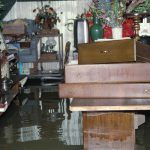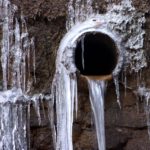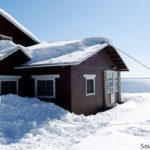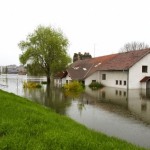The chimney is an important part of homes and has been for hundreds of years. A warm fire in chilly weather encourages families to gather and spend cozy moments around the blistering flames. Primarily featuring brick or stone, chimneys require regular maintenance to continue providing a reliable source of warmth.
When the chimney leaks, as a homeowner, you’ll want to give the situation immediate attention. A water leak in the chimney can cost homeowners anywhere from $150 to $350 to repair. The lower price point results from a do-it-yourself job, while hiring a contractor will tend to raise the price significantly. If you decide to hire a contractor to inspect your chimney or enlist the aid of a chimney sweeper, you’ll find off-season prices between April and September to be financially attractive.
When you decide to navigate the DIY route, your first step in fixing a leaking chimney is to discover the source of the leak. Afterwards, here are 6 ways to fix a chimney leak:
- Seal mortar joints
- Reflash the chimney
- Add a chimney cover
- Seal the chimney crown
- Replace the mudcap
- Replace roof shingles
How to Find the Chimney Leak
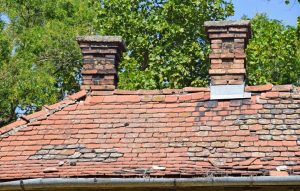
Determining exactly where the chimney leak starts requires the patience of at least two or more people and a functional water hose. In addition, a cell phone is useful to allow communication between one person situated at the top of the roof and a second individual watching for the spring of leaks within the interior of the home.
The goal of this process is to isolate each area of the chimney to determine the faulty spot. Although the process is time-consuming, you’ll know with certainty where the source of the chimney leak stems from.
While positioned at the top of the roof near the chimney, first aim the hose toward each individual roof shingle surrounding the chimney. Stream water downwards along each roof shingle for a minute, taking care to saturate one shingle at a time. A trusty partner below will keep watch for any leaks that enter subsequent to the water sprays.
Continue applying water to each single shingle, while moving toward the chimney itself. If no water leaks appear inside the home, then the shingles are functional and the leak is higher up the chimney.
The next step in this laborious but effective process is to run water around the chimney, starting at the back then working your way around the sides and front. If the observer inside notes that no leaks have sprung, then the source of the leak is likely to be around the mortar joints, mudcap or bricks.
Apply water to each brick on the chimney until the observer detects the leak. If the leak is not visible at this point, the mortar cap is the culprit. Stream water along the mortar cap to test if the area is truly the cause of the chimney leak.
Depending on where the leak originated, you have several repair options to restore your chimney.
1. Seal Mortar Joints
Rainwater follows an easy path into the interior of your home when mortar joints become worn enough to allow water seepage. Water that enters through holes in the mortar joint can travel via a zigzag pattern past the flashing and end up staining nearby ceilings inside the home.
An application of new mortar easily solves the problem of deteriorated mortar. You may also wish to waterproof the chimney to prevent water from leaking into the home.
2. Reflash the Chimney
Detecting tiny holes in the flashing can be a difficult task. Even a small puncture can leak a vast amount of water through the chimney.
Experts recommend homeowners seek the services of a sheet metal contractor or roofing contractor who specializes in sheet metal projects to install new flashing. Residential roofers often lack the expertise in sheet metal work to properly reflash the chimney.
3. Add a Chimney Cover
Chimneys will leak if a chimney cover is not in place. Aside from rainwater, bugs, birds, and natural debris can coast into the chimney, making chimney clogs a likely occurrence.
Install a chimney cover to solve this problem.
4. Seal the Chimney Crown
The cement-based chimney crown keeps rainwater out of the chimney. Cracks develop over time, especially when freezing temperatures cause existing small cracks to expand.
Seal tiny cracks to protect the crown and prevent them from developing into bigger cracks. In the event the crown features a network of large cracks, replacing the entire crown may become necessary.
5. Replace the Mudcap
The mortar around the top of the chimney might be cracked and cause water to seep into the hearth below. Loose mortar also allows rainwater to saturate the inside of the home.
Fix the issue of cracked or loose mortar by replacing the mortar cap and installing a flu cap. An alternative solution is to place a full-size metal chimney cap over the entire chimney.
6. Replace Roof Shingles
The roof shingles that surround the chimney base may show signs of wear and allow leaks to pass through the area. Leaks caused by worn roof shingles around the chimney are uncommon. However, in the rare event your chimney is leaky due damaged roof shingles, replace the shingles surrounding the chimney.
Water Damage Restoration
Despite your efforts to resolve a leaking chimney, water may still unexpectedly engulf the interior of the home. Water emergencies due to a leaking chimney, natural disaster or faulty plumbing, require the services of a water damage restoration company. ServiceMaster of North Texas is equipped with a team of trained technicians and advanced equipment to remove all traces of excess water from your home.
ServiceMaster of North Texas
The ServiceMaster of North Texas specialists will arrive onsite within two to three hours of your call. The skilled technicians have the skilled manpower and expertise to thoroughly restore your water-logged home within the short span of two to five days. Powerful air movers and dehumidifiers are positioned throughout the home to extract all excess moisture. The team will even help you file a claim with your homeowner’s insurance.
When an unanticipated flood of water takes a disastrous toll inside your home, contact Dallas’ most trusted water damage restoration experts, ServiceMaster of North Texas, to return your property to its pre-damaged state quickly and efficiently.
